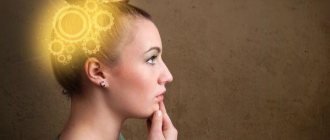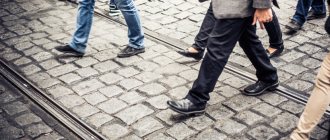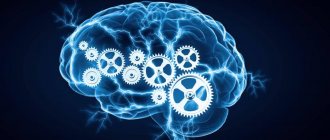What do we owe to the left hemisphere?
The human brain consists of the right and left hemispheres, each of which has its own functions. The right is responsible for emotions, intuition, and creativity. The left is for logical thinking, analysis, classification, systematization, structuring of incoming information.
They both participate in the thought process, but each in their own way. If the right one records information as a whole, then the left one sequentially processes it, building a logical chain of facts and giving them an assessment.
It is to the left hemisphere that people owe analytical thinking - the ability to establish cause-and-effect relationships and draw conclusions.
Thanks to the left hemisphere, we can speak, understand other people's speech, read, write, count and remember. People with a developed left hemisphere master foreign languages faster. It also controls positive emotions, while the right one is responsible for negative ones.
In addition, the left hemisphere controls the functioning of the right half of the human body, and the right hemisphere controls the left. For example, the right hand performs actions under the influence of a signal from the left hemisphere of the brain.
So, thanks to the left hemisphere, we are organized and learnable, purposeful and practical, and our actions are logical.
How to develop the left hemisphere of the brain?
Development of the left hemisphere of the brain
The left side is responsible for logic. Language skills, solving logic circuits, mathematical operations, calculating integers and fractions, keeping track of time - all this is the work of the left half of the brain.
Therefore, to improve children's performance in school or to improve overall development, we must develop the left side of our “computer”.
So, how to develop the left hemisphere of the brain? The following must be done:
- Work on developing logic - study mathematical algorithms, practice logical thinking
- Solve complex geometric problems. Studying a science like mathematics is impossible without a well-developed left half of our brain
- Solve puzzles and crosswords - the left hemisphere works better than the right when analyzing actions and composing words
- A left-handed person needs to do everything with his right hand: write, draw, eat. It is necessary to use the right side of the body
- Take vitamins to improve brain function
Important: Try not to focus on the development of one half of the brain. It is the work of both halves of our brain “computer” that is valuable. Develop the left and right hemispheres of your brain at the same time.
Pain in the left hemisphere
Many people suffer from headaches localized on the left side of the head. The most common disease that causes such pain is migraine. Experts identify the following reasons:
- physical and psychological exhaustion;
- dehydration of the body;
- stress;
- poor blood circulation to the brain
To relieve migraine symptoms, you need to drink plenty of water and give your body a rest. Meditation can also help with this. Pranayama is especially good. Breathing exercises will help saturate the brain with oxygen and improve blood circulation.
But it is necessary to take into account that pain in the left side of the head may also indicate other diseases, more serious than migraine, so if you do not know what the cause is, it is better to consult a doctor.
I've told you about the functions of the left hemisphere and how it's activated, but in order for the brain to function more effectively, both sides need to be developed. And which hemisphere is dominant for you, you can write in the comments to the article. I will also be glad if you share your knowledge about exercises to activate brain activity. Sincerely, Ruslan Tsvirkun.
How to develop the right hemisphere of the brain?
Development of the right hemisphere of the brain
Above, we figured out what the left half of the brain is responsible for; now we need to work on developing intuitive abilities and creative thinking.
The right side of the brain processes data that comes from the senses. It allows you to synthesize existing data in your head, so a person can solve puzzles and act according to his own plans, and not according to compiled templates.
By developing the right half, we cultivate a holistic view of the world and reality. How to develop the right hemisphere of the brain? Do the following:
- Listen to music - it should be classical music, not rock or pop
- Dream, meditate alone. It is better to do meditation on the seashore or in the forest, where you connect with nature
- Draw, write poetry, compose music. Any creativity helps the development of the right half of the brain
Advice: Get creative, believe in your capabilities, and the result will not take long to arrive.
Harmonious work
It should also be mentioned that both hemispheres of the brain need to be developed simultaneously. After all, only a diversified person is talented, more competitive in the labor market and unique in his capabilities. Moreover, there are people who are called ambidextrous. Both hemispheres of their brain are equally developed. They can perform all actions equally well with both their right and left hands. Such people do not have a pronounced, leading hemisphere; both parts of the brain are involved in the work equally. This state can be achieved through hard work and training.
How to develop a child's brain?
How to develop a child's brain?
From birth, a baby's brain is wired to learn new things. Therefore, even such ordinary actions as feeding, walking and changing diapers are educational.
Advice: Don’t invent anything new in order to develop your baby’s brain. Don't get hung up on doing any special activities.
In order to properly develop a child’s brain, it is necessary to provide him with only proper care.
Important: Talk to your baby even when you are picking up mail from the mailbox or making tea. Such comments help to interest the child, which means he begins to think and develop.
Reading books together, playing games, mother's songs, dancing with the baby in your arms helps well in development. Even a regular massage and rocking before bedtime will develop the child’s brain.
Brain exercises for adults and preschool children
Brain exercises for adults and preschool children
Psychophysiologists work hard to create methods for harmonizing and developing the brain.
Each hemisphere is responsible for its own hand, so musicians and pianists will improve both hemispheres of the brain. After all, they play musical instruments with both hands, which helps to develop the two halves of the brain well.
Brain exercises for adults and preschool children that involve two hands are very effective:
EXERCISE : Grasp the tip of your nose with your left hand and the left earlobe with your right hand. Then lower your arms and clap your hands. Switch hands and repeat the exercise
EXERCISE : Sit at a table and place a piece of paper in front of you. Take a pencil in both hands and begin to draw symmetrical mirror drawings. Let them be simple at first, such as letters or numbers. If it is difficult to do this with both hands, you will have to first perform the exercise with each hand separately.
EXERCISE: Take a piece of paper with both hands and wave it, using not only your hands, but also your elbows and shoulders
EXERCISE: Place your left hand on your right shoulder, turn your head in this direction, focusing your gaze on some object. Slowly turn your head towards your left shoulder and look over it. Repeat the exercise, placing your right hand on your left shoulder
EXERCISE: Place your hands on the back of the chair - this is a support. Step one leg back. Move your body forward, bending your other leg. Transfer your body weight to it. Raise your heel slightly behind your standing leg. Now smoothly shift all your weight onto your back leg. Lower her heel and lift the toe of the other foot. Repeat 5 times, then change legs.
EXERCISE : Write words on paper in different colors. Repeat them as quickly as possible, and without hesitation
Exercise for brain development
Chess, checkers, puzzles, Rubik's cube, puzzles and crosswords help in brain development.
Part 2
1. Place your feet parallel.
2. Open the hand lock, lower your arms and connect the fingertips of both hands with each other. Place them so that the joined thumbs are parallel to the floor and the rest are pointing down.
This exercise takes two minutes or more.
3. Now you need to look at the floor, but don’t lower your head. The tongue still rests on the hard palate. Stay there, relaxed, a little longer.
“LAZY EIGHTS” FOR WRITING
Lazy Eights for Writing is a writing exercise specifically designed to improve written communication.
Lazy eights for writing are great for establishing the rhythm needed to improve hand-eye coordination.
To do this exercise, you need to draw an “infinity” symbol (a figure of eight “on its side”) on a board or paper in a continuous motion. Start from the center, then move counterclockwise: up, left and back to the center; then clockwise: up, to the right and back through the bottom to the center point. Five or more eights are drawn with each hand, and then five or more are drawn with both hands together. It is best to draw figure eights large (but within the field of view) to stimulate large muscles, and on a surface to stimulate tactile sensitivity. This action helps to relax the muscles of the hands, forearms and shoulders, and also facilitates the process of tracking with the eyes.
You can feel the integration this exercise gives you by thinking about something you need to communicate in writing. Pay attention to your inner sensations. How tightly do you grip your pen when you start writing? Are your thoughts clear to you? Write a few sentences and notice whether your thoughts flow freely or whether you have difficulty conveying what you want to say. Now draw a horizontal figure eight in the entire size of the sheet (A4 format, 20x30 cm) as described above. After that, write a few sentences again, paying attention to how tightly you grip the pen, how clear your thoughts are, and how easily you can convey what you want.
Lazy Eights are very helpful during periods of creative stagnation. They can help students during tests.
. If they start to feel stressed and see that their thinking has become homolateral. (homolateral thinking - limited to over-functioning of either the left or right hemisphere.), they simply draw a few Lazy Eights with their fingers on the desk and regain cross-lateral integration. In this state it is much easier to find a solution.
“LAZY EIGHTS” FOR EYES
Lazy Eights for Eyes are similar to Lazy Eights for Writing, except that they focus on eye movements and hand-eye and eye-hand coordination. These “Lazy Eights” involve the eyes following a moving thumb as it describes an “8” (like an infinity sign) in the horizontal field of vision. To do this, put your hand forward, raise your thumb at the level of the bridge of your nose in the front visual field, approximately at the distance of your elbow, and begin to move in a figure eight shape. Movements should be slow and deliberate to achieve maximum muscle concentration. Keep your head straight and relaxed. At the same time, follow the movement of the thumb only with your eyes. The thumb starts moving from the center of the visual field and goes up along the edge of the field of vision, then follows counterclockwise down and returns to the center. Then similarly clockwise - to the right and up, and back to the center. The movement must be repeated at least three times with each hand, using smooth and continuous movements. After this, clasp your hands with your thumbs pointing up and forming a crosshair (“X”). Focusing on the center of the crosshair, do the Lazy Eight, now with both hands clasped.
The exercise effectively strengthens the external eye muscles, promoting the development and myelination of neural networks originating from the area responsible for central visual and fine motor tracking. It also establishes eye-hand and hand-eye coordination patterns.
The Lazy Eight pattern can also be depicted in three dimensions, moving closer and further away from the eye. The figure eight of this version of the exercise is rotated 90° so that it is now perpendicular to the body. This exercise trains the internal muscles of the eyes, which are responsible for the position of the lens and the size of the pupil. Starting from the center of the visual field, move your hand (thumb pointing up) forward from the body, outlining the “far” ring of the “Eight”, and then from its center to the eyes, outlining the “near” ring of the “Eight”. This movement, like the previous one, should be smooth and continuous: only the eyes and hand should move. First, the exercise is performed by one hand, then the other, and finally both together in the “lock” position.
People who wear glasses can remove them if they wish so that their field of vision is not limited by the frames. When performing the exercise correctly, you should feel maximum movement of the muscles of both eyes. If your eye muscles are weak, then you should experience a sensation as if after eye gymnastics.
These exercises will help relieve eye fatigue, neck tension, back pain after working at the computer or driving a car, so they are no less useful for parents than for children. They are especially recommended for people with glasses, as they improve the functioning of the eye muscles and strengthen the hand-eye connection. And, perhaps most importantly, they stimulate the desire to fantasize and actively create.
Exercise:
Gymnastics for the brain - Olga Troitskaya
Gymnastics for the brain - Olga Troitskaya
The program of exercise systems was developed back in the 70s. Scientists of that time conducted research with their students, each of whom performed gymnastics every day. Since then, the system has spread throughout the world with excellent results.
Olga Troitskaya is a successful psychologist. She places great importance on brain development, because thanks to a clear mind a person can be happy and successful.
Important: Exercises increase the tone of the cerebral cortex, and massage of biologically active points allows you to make both halves of the brain work.
EXERCISE No. 1 “CROSS RABBLS”:
- Crawl on the floor like a child. You can just march when you feel lethargic and don’t want to do anything. The feeling of cheerfulness will come instantly
EXERCISE No. 2:
- Stand straight, feet shoulder-width apart
- Bend over, bringing your shoulder to your hip, not your elbow to your knee.
- The head turns slightly as the action progresses
- The mouth is not clamped, the lips are free. Only all muscles and the lower part of the face are tightened
EXERCISE No. 3 “BRAIN BUTTONS”:
- Place two fingers under the collarbones (there are 2 holes in that place). The second hand is placed on the navel
- Lightly massage the pits
- Change hands
- You also need to massage the dimples located between the 1st and 2nd ribs under the collarbones. This is a powerful neuro-lymphatic zone with large vessels coming from the heart
Synchronization of the brain and large vessels of the heart
EXERCISE No. 4 “THINKING CAP” :
- Grasp the top of the ear and massage gently, as if stretching back and turning each point of the ear
- Turn your head to the left as far as possible. Massage your ears, allowing your head, looking back, to go further and further. Do the massage from top to bottom. When your head turns to the limit, stop doing the exercise.
- Turn your head to the right and repeat all the steps again as with turning your head to the left
EXERCISE No. 5 “OWL”:
- Grab your left shoulder in the middle with your right hand
- Turn your head slightly to the left
- Start warming up - as you exhale, squeeze your fingers and say “UH.” Widen your eyes and look like an owl
- Turn your head slightly from side to side
- Then grab your right shoulder with your left hand and repeat the exercise
EXERCISE No. 6 “LAZY EIGHTS”:
- Place your feet shoulder-width apart, feet parallel, knees straight and slightly bent. The body is relaxed
- Bend one arm at the elbow and extend it forward. The thumb points up. Fix your gaze on him. The thumb is on the midline of the body.
- Imagine a circle in front of you and draw a lying figure eight in it.
- Switch hands and repeat the exercise
- Then do it with both hands together - to the left and up
Eights in the air to synchronize the brain
EXERCISE No. 7 “DENISON HOOKS” :
Part 1 of the exercise:
- Intertwine your legs
- Stretch your arms forward with your palms facing outward
- Place your palms together, interlocking your fingers and turning your arms toward your chest
- Lift your tongue and press it to the roof of your mouth
- Look up. You need to do the exercise for as long as you feel comfortable
Part 2 of the exercise:
- Place your feet shoulder-width apart
- Place your hands down and clasp them with a boat at the level of your lower abdomen
- Lower your eyes, press your tongue to the roof of your mouth
Below is a video with Olga Troitskaya’s brain gymnastics. It only presents the exercises themselves.
Part 1
1. Stand with your legs crossed. In this case, the feet rest firmly on the floor.
2. Extend your arms in front of you parallel to the floor. Cross them so that your palms meet each other and interlock your fingers.
3. Bend your elbows, turn your hands inward and press them to your chest so that your elbows are pointing down.
4. Press your tongue against the hard palate just behind your upper teeth. Raise your eyes upward and keep your gaze in that direction. The chin is lowered, the head is not raised. Breathing is calm, body is relaxed. You may sway slightly - this is a normal reaction of the body. If the shaking is strong, it is better to sit in the same position.
Finger exercises for the brain
Finger gymnastics for the brain
The fitness system for the brain is a specially designed exercise that helps develop and synchronize the work of both hemispheres of the brain and develop hand motor skills.
Finger exercises for the brain bring many benefits. It must be done daily.
Gymnastics for cerebral vessels - Nishi
Gymnastics for cerebral vessels - Nishi
Japanese healer Katsuzo Nishi created a system of exercises for healing the body. This is done through training the capillaries.
Gymnastics for brain vessels Nishi:
- The simplest exercise to improve the condition of capillaries and blood circulation is called “Vibration” . In the morning, without getting out of bed, lift your legs and arms up and shake them for 2 minutes. This kind of massage of the capillaries also helps to redistribute lymphatic fluid, which allows you to cleanse the body of toxins
- Exercise "Goldfish" . Lying on a flat surface, place your hands under your neck, at the level of the fourth cervical vertebra. Pull your toes towards you. Tense yourself very hard and make vibrating movements with your whole body, like a fish.
Such exercises help reduce the tone of the nervous system and increase vascular tone. Active blood circulation begins throughout the body, blood vessels actively work and strengthen.
Here are more effective exercises for strengthening blood vessels and improving brain function:
Lazy Eights
1. Imagine in front of you at eye level a figure eight lying on its side (infinity sign). Its center is at the level of the bridge of the nose.
2. Extend your arm forward, slightly bent at the elbow. Make a fist with your fingers and raise your thumb up. Move your hand in the air from the center to the left and up counterclockwise, down in a circle and again to the right and up, returning to the starting point. The movement should be smooth and continuous. Follow the thumb with your eyes, the head remains motionless. Repeat three times with each hand.
3. Join your hands in a lock. Again we draw a lazy figure eight and follow the fingers with our eyes. Repeat three times.
Brain gymnastics and exercises for the elderly
Brain gymnastics and exercises for the elderly
- Older people also need to work hard to rejuvenate their bodies if they want to live a healthy life
- Therefore, it is necessary to start doing brain exercises and exercises for the elderly today. Exercises from Olga Troitskaya, which are presented above, have a very good effect on brain function.
- All the exercises that are suitable for older people are suitable for younger people and children. Just do them slowly and do as many reps as you can
- Thanks to constant exercise, lethargy and laziness will disappear, and the vestibular apparatus will be activated. An elderly person will be able to achieve full brain function











